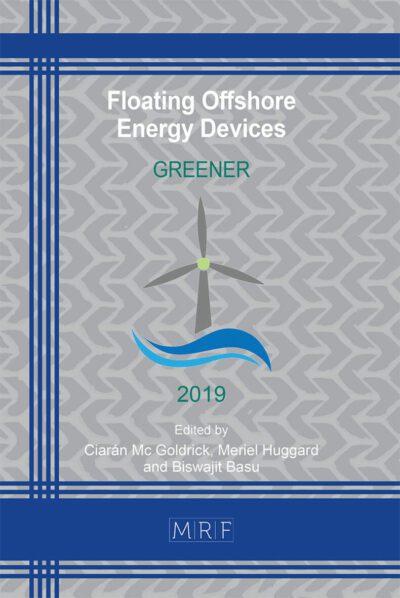Comparison of machine learning classification techniques for process window identification applied on different manufacturing processes
Manuel LOPEZ CABRERA, Wahb ZOUHRI, Sandra ZIMMER-CHEVRET, Alexandre COLLOT, Stéphane MATHIEU, Daniel BOEHM, Jean-Yves DANTAN
Abstract. This paper aims to evaluate and compare the efficacy of various classification machine learning algorithms in identifying Process Window based on different experimental data collection strategies. To achieve this, the impact of different experimental strategies on the performance of classification algorithms is examined. Subsequently, the classification algorithms least affected by different experimental strategies will be integrated with the adaptive Design of Experiments to identify the manufacturing Process Window in an adaptive manner in future research. The manufacturing processes used as case studies include Friction Stir Welding, Single Point Incremental Forming, and Wire Arc Additive Manufacturing.
Keywords
Manufacturing, Process Window Identification, Classification Machine Learning
Published online 5/7/2025, 11 pages
Copyright © 2025 by the author(s)
Published under license by Materials Research Forum LLC., Millersville PA, USA
Citation: Manuel LOPEZ CABRERA, Wahb ZOUHRI, Sandra ZIMMER-CHEVRET, Alexandre COLLOT, Stéphane MATHIEU, Daniel BOEHM, Jean-Yves DANTAN, Comparison of machine learning classification techniques for process window identification applied on different manufacturing processes, Materials Research Proceedings, Vol. 54, pp 284-294, 2025
DOI: https://doi.org/10.21741/9781644903599-31
The article was published as article 31 of the book Material Forming
![]() Content from this work may be used under the terms of the Creative Commons Attribution 3.0 license. Any further distribution of this work must maintain attribution to the author(s) and the title of the work, journal citation and DOI.
Content from this work may be used under the terms of the Creative Commons Attribution 3.0 license. Any further distribution of this work must maintain attribution to the author(s) and the title of the work, journal citation and DOI.
References
[1] A. Engelhardt, M. Kahl, J. Richter, P. Krooß, A. Kroll, and T. Niendorf, ‘Investigation of processing windows in additive manufacturing of AlSi10Mg for faster production utilizing data-driven modeling’, Addit. Manuf., vol. 55, p. 102858, Jul. 2022. https://doi.org/10.1016/j.addma.2022.102858
[2] S. Liu, C. Brice, and X. Zhang, ‘Hierarchical bead materials multi-property design for wire-feed laser additive manufacturing’, J. Manuf. Process., vol. 80, pp. 546–557, Aug. 2022. https://doi.org/10.1016/j.jmapro.2022.05.028
[3] Y. Ma, X. Wang, K. Dang, Y. Zhou, W. Yang, and P. Xie, ‘Intelligent recommendation system of the injection molding process parameters based on CAE simulation, process window, and machine learning’, Int. J. Adv. Manuf. Technol., vol. 128, no. 9–10, pp. 4703–4716, Oct. 2023. https://doi.org/10.1007/s00170-023-12264-6
[4] J. Chi et al., ‘Obtaining strength and ductility synergy for directed energy deposited Ti17 alloys by machine learning’, Mater. Lett., vol. 356, p. 135537, Feb. 2024. https://doi.org/10.1016/j.matlet.2023.135537
[5] W. Xing et al., ‘Recognition and classification of single melt tracks using deep neural network: A fast and effective method to determine process windows in selective laser melting’, J. Manuf. Process., vol. 68, pp. 1746–1757, Aug. 2021. https://doi.org/10.1016/j.jmapro.2021.06.076
[6] K. Aoyagi, M. Ono, K. Yanagihara, K. Wakoh, and A. Chiba, ‘Developing auto process mapping technique for powder bed fusion using an electron beam’, Prog. Addit. Manuf., Nov. 2023. https://doi.org/10.1007/s40964-023-00535-3
[7] M. L. Cabrera, W. Zouhri, S. Zimmer-Chevret, and J.-Y. Dantan, ‘An overview of strategies for identifying manufacturing process window through design of experiments and machine learning techniques while considering the uncertainty associated with’, Int. J. Adv. Manuf. Technol., vol. 134, no. 11–12, pp. 4981–5019, Oct. 2024. https://doi.org/10.1007/s00170-024-14480-0
[8] C. Sharpe, T. Wiest, P. Wang, and C. C. Seepersad, ‘A Comparative Evaluation of Supervised Machine Learning Classification Techniques for Engineering Design Applications’, J. Mech. Des., vol. 141, no. 12, p. 121404, Dec. 2019. https://doi.org/10.1115/1.4044524
[9] B. Wang et al., ‘A hybrid machine learning approach to determine the optimal processing window in femtosecond laser-induced periodic nanostructures’, J. Mater. Process. Technol., vol. 308, p. 117716, Oct. 2022. https://doi.org/10.1016/j.jmatprotec.2022.117716
[10] S. Zimmer, L. Langlois, J. Laye, and R. Bigot, ‘Experimental investigation of the influence of the FSW plunge processing parameters on the maximum generated force and torque’, Int. J. Adv. Manuf. Technol., vol. 47, no. 1–4, pp. 201–215, Mar. 2010. https://doi.org/10.1007/s00170-009-2188-3
[11] Y. Xiang et al., ‘Forming and defect analysis for single track scanning in selective laser melting of Ti6Al4V’, Appl. Phys. A, vol. 124, no. 10, p. 685, Oct. 2018. https://doi.org/10.1007/s00339-018-2056-9
[12] A. Keshavarzkermani et al., ‘An investigation into the effect of process parameters on melt pool geometry, cell spacing, and grain refinement during laser powder bed fusion’, Opt. Laser Technol., vol. 116, pp. 83–91, Aug. 2019. https://doi.org/10.1016/j.optlastec.2019.03.012
[13] C. Bourlet, S. Zimmer-Chevret, R. Pesci, R. Bigot, A. Robineau, and F. Scandella, ‘Microstructure and mechanical properties of high strength steel deposits obtained by Wire-Arc Additive Manufacturing’, J. Mater. Process. Technol., vol. 285, p. 116759, Nov. 2020. https://doi.org/10.1016/j.jmatprotec.2020.116759
[14] F. Pedregosa et al., ‘Scikit-learn: Machine Learning in Python’, J. Mach. Learn. Res., vol. 12, no. 85, pp. 2825–2830, 2011.
[15] M. Lopez Cabrera, W. Zouhri, S. Zimmer-Chevret, and J.-Y. Dantan. (2024, July 10-12). Measurement uncertainty propagation in classification machine learning techniques following a Bayesian framework. 18th CIRP Conference on Intelligent Computation in Manufacturing Engineering, Gulf of Naples, Italy.












